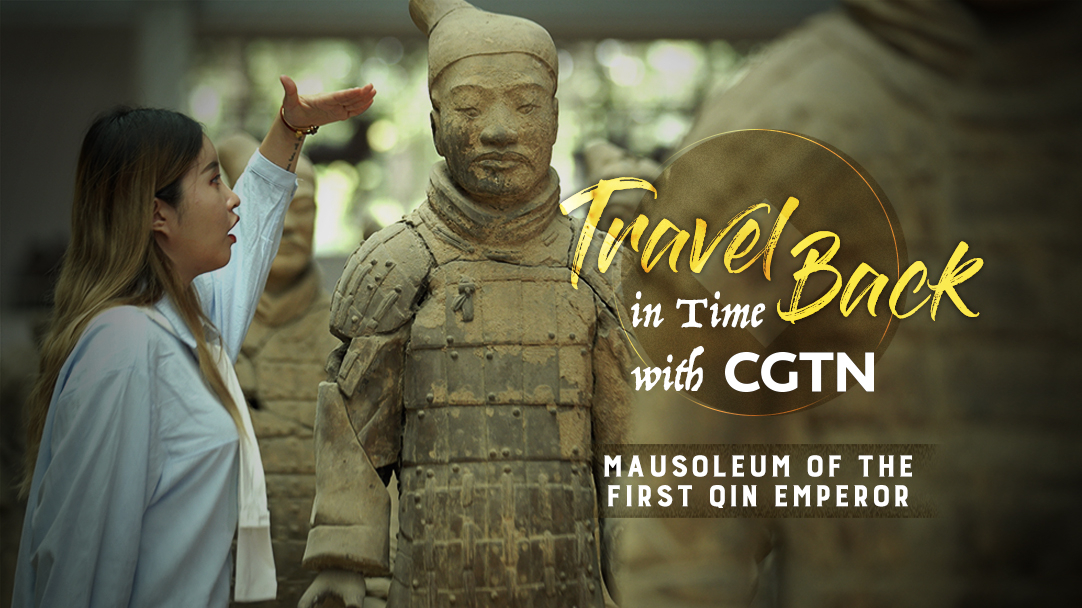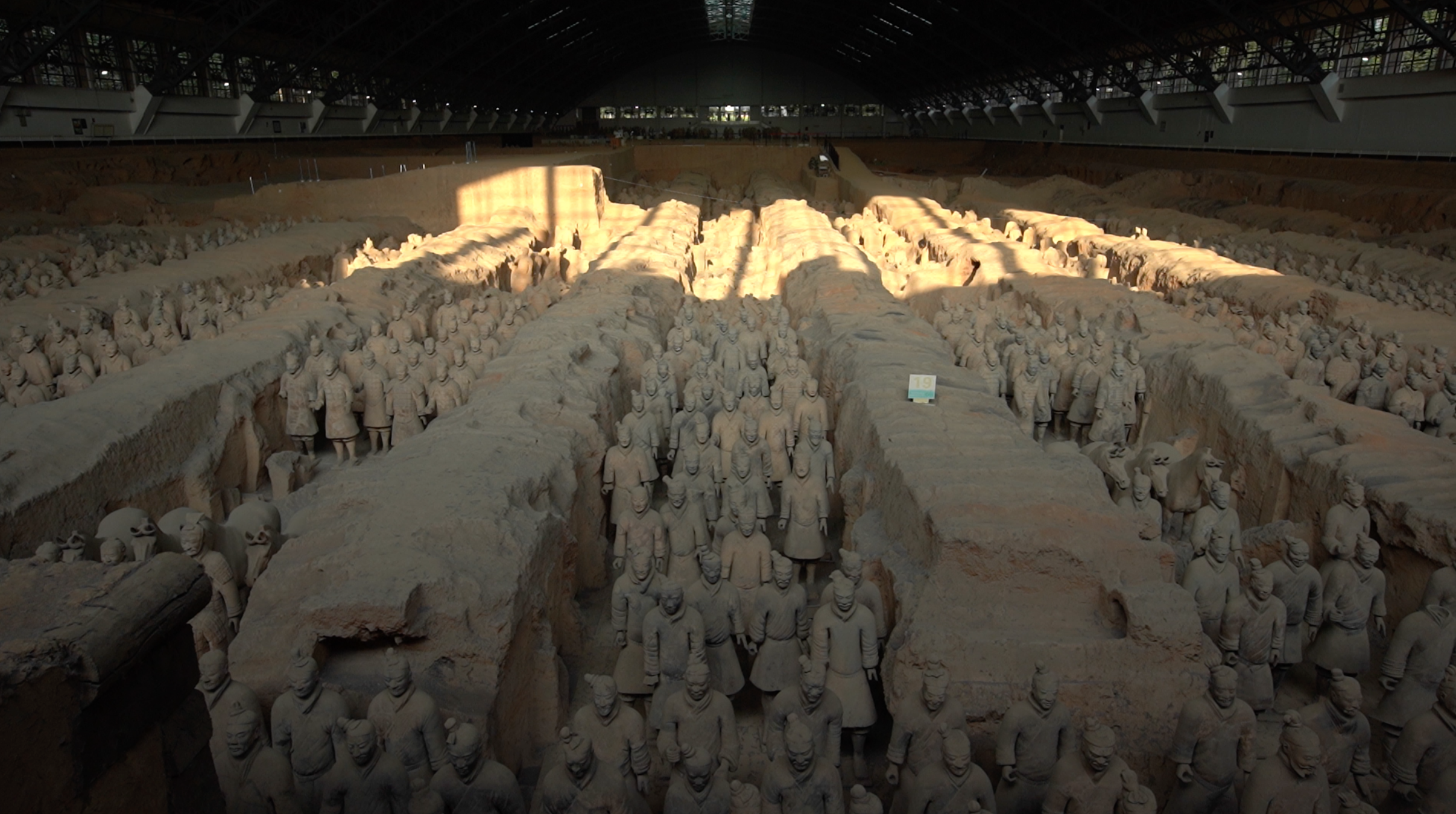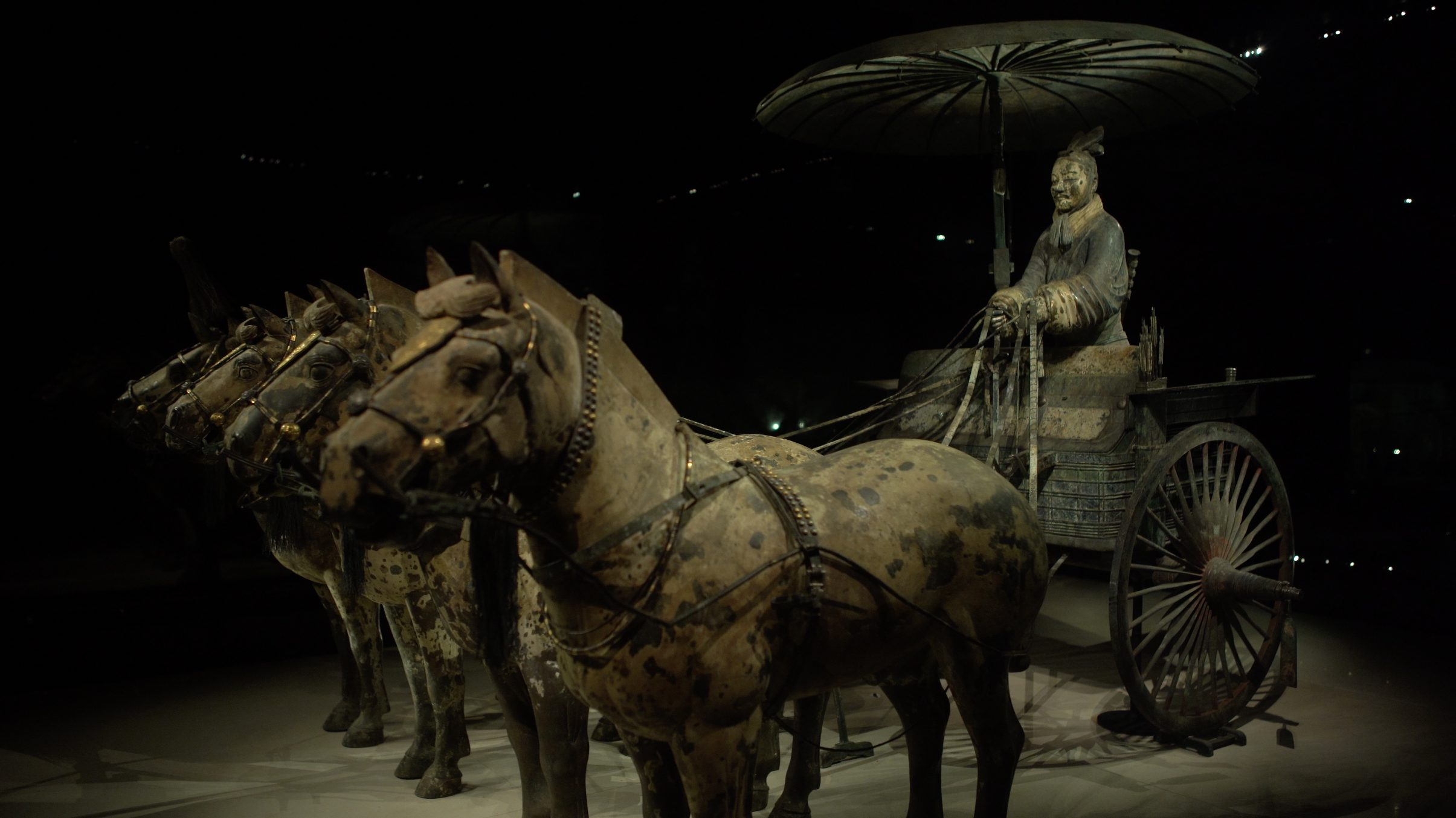Terracotta Warriors, one of the eight wonders of the world, have enjoyed international fame. Located in Xi’an City in northwest China’s Shaanxi Province, they are of the Terracotta Army of the first-ever emperor in ancient China or Qin Shihuang in Chinese, Ying Zheng.
Even though I knew they are life-sized sculptures, I was still in awe when I saw them. I was lucky enough to get special permission to enter the pit and take a look at them up close for the first time.
They were made around 2,200 years ago, and yet, I was amazed by the carving of the sculptures. Their expressions are solemn, and their eyes are so vividly carved that I was afraid to look at them.
04:27


The Terracotta Warriors inside the Mausoleum of the First Qin Emperor in Xi'an, Shaanxi Province, northwest China. /VCG Photo
The Terracotta Warriors inside the Mausoleum of the First Qin Emperor in Xi'an, Shaanxi Province, northwest China. /VCG Photo
When I first got down into the pit, the sculptures frightened me because some of them are lacking limbs or body parts.
I was told that pottery is not easy to preserve for over thousands of years. But to my surprise, these warriors were actually painted in color when they were first unearthed. However, the color fell off immediately after being exposed to the air.
The difficulty of preservation is one of the reasons they have suspended excavations in other pits.
In the second and third pits, I saw large swathes of fenced areas with warriors waiting to be restored and unearthed.

The sculptures of terracotta horses inside the Mausoleum of the First Qin Emperor in Xi'an, Shaanxi Province, northwest China. /CGTN Photo
The sculptures of terracotta horses inside the Mausoleum of the First Qin Emperor in Xi'an, Shaanxi Province, northwest China. /CGTN Photo
Although the terracotta warriors are breathtaking and marvelous, they are only a part of the Mausoleum of the First Qin Emperor.
Shen Wenxi, expert and museum librarian of the Chinese Academy of Social Science (CASS), told me there’s an even grander area with mercury-made mountains, rivers and seas inside the emperor’s underground palace. What a landscape it must be!
However, there is no current plan to excavate it, not until there are more concrete ways of protecting and preserving them.
Archaeologists are still busy restoring the burial relics that were unearthed in the 1970s.
Though I'm extremely curious about the great wonders buried underground, cultural treasures always come first. I'll wait until science and technology are advanced enough. I believe I will eventually see them.
Reporter: Li Yimei
Scriptwriter: Li Yimei
Editor: Ai Yan
Copy editors: Oscar Margain, Liane Ferreira
Chief editors: Chen Ran, Lin Dongwei
Cover image: Yin Yating
Executive producer: Zhang Xiaohe
Producer: Si Nan
Supervisor: Zhang Shilei